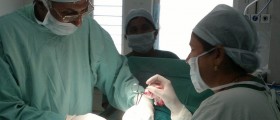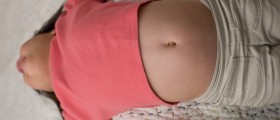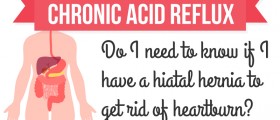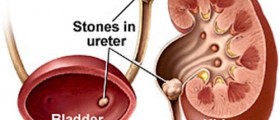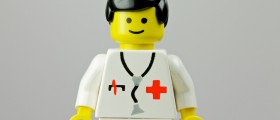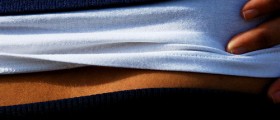im only 15 but ive had lumps like cyst inbetween my groin and inner thigh i get cramps discharge it hurts to sit or walk ive had them for a couple years and the doctors havent done much about it but give me antibiotics that did not work
Loading...
My period finished on Feb 8th, I had sex with my bf on Feb 11th. The condom slipped off half way through. Neither of us noticed when exactly it happened but it was before ejacualation. When my bf noticed he wasnt wearing one anymore we put another one on straightaway and continued until we both came. We couldnt find the 'missing' condom at the time but the next morning I realised it was inside me the whole time. I dont think my bf had masturbated dat day or the day before so I dont think the chance of semen in his pre-cum is dat high(i havent asked him about this though).
On Feb 14th we had sex again (on a beach but it was so cold we stopped before either of us came)We did use a condom. A few days later my breasts started to get sore around the nipples and its been like dat for the last week and a half. My next period is due around March 2nd.
Altough my periods have been irregular for the last year (since ive become sexually active) Im really worried I mite be pregnant this time. Because of the condom coming off and my breasts getting sore a week early...I know its a huge possiblity that the stress and worry im putting myself through may have caused my breasts getting sore and may delay my period but I cant relax to save my life.
Ive taken 2 pg tests (both neg) but i know its probably too early for them to work, I just needed to do something to try and calm myself down.
Is it possible for my breasts to be sore for so long and still get a late period? Im also quite tired alot of the time, but Ive been feeling this tiredness for a long time before this incident occured so not sure if they're anyway related.
Im so worried and i dont know wat to do to stop myself stressing and delaying my period even further if it turns out im not pregnant.
Please send me some advice. Thank you
On Feb 14th we had sex again (on a beach but it was so cold we stopped before either of us came)We did use a condom. A few days later my breasts started to get sore around the nipples and its been like dat for the last week and a half. My next period is due around March 2nd.
Altough my periods have been irregular for the last year (since ive become sexually active) Im really worried I mite be pregnant this time. Because of the condom coming off and my breasts getting sore a week early...I know its a huge possiblity that the stress and worry im putting myself through may have caused my breasts getting sore and may delay my period but I cant relax to save my life.
Ive taken 2 pg tests (both neg) but i know its probably too early for them to work, I just needed to do something to try and calm myself down.
Is it possible for my breasts to be sore for so long and still get a late period? Im also quite tired alot of the time, but Ive been feeling this tiredness for a long time before this incident occured so not sure if they're anyway related.
Im so worried and i dont know wat to do to stop myself stressing and delaying my period even further if it turns out im not pregnant.
Please send me some advice. Thank you
Loading...
I'm not a Dr., so obviously if any of you are experiencing prolonged symptoms you need to be under the care of your physician. I just wanted to mention though that as women, it is not uncommon for the lymph node on the inner thigh/groin area to swell around the time that we ovulate. It tends to be on one side (usually the side you release an egg from that month). Try to observe the timing of the swelling, and this is what it sounds like, esp for the young lady who experiences discharge along with it. Around ovulation, women produce fertile cervical fluid, and a lot of women just assume its "discharge". After menstruation, cervical fluid can start out sticky, gummy, crumbly, to creamy/milky, and the closer you get to ovulation, the more egg-white like the cervical fluid becomes (stretchy, clear, streaked, like an egg-white). Hopefully this answers the question for some of you, as you can see if your symptoms are consistent with signs of fertility. Please get checked out by your doctor to confirm it either way.
Loading...
i have the SAME thing.. i think it could be a strained muscle.. a freakin coachs at school work us to hard EVERY day.. it hurts and theres slight bruising
Loading...
If the bump is on the medial thigh it could be a few different things. If it seems to be hard to the touch and is at least 1" in diameter then it should be checked by a physician. The lymph nodes are located in the area but also this is the place where many hernias form. Lymph nodes that are less than 1" are considered a normal occurrence. As far as the swollen lymph nodes it could be many things that would result in enlarged lymph nodes. Std's or other types of infections are among some of the causes. If infection is the cause then the MD will likely start you on antibiotics. But if the lump is causing pain or is increasing in size it must be checked by a physician as soon as possible.
Loading...
Its not a life of death thing i had on before it comes from lifting heavy objects it with go away in a couple days shower daily keep your grown area clean
Loading...
If it has a slight head like a spot then it is most likely to just be an ingrown hair these tend to feel really tender and can be painful with things rubbing against it! This can be due to shaving in the wrong direction. i had one it was quite hard but went softer while in a hot shower you can either burst it yourself and lots of puss does come out or go to your doctor and they will give you an anti-biotic just to help fight the infection.
If it doesnt have a head on it this can then mean its a swollen lymph node it feels a bit harder and isnt really sore to touch but can be irritated with underwear rubbing against it you should go to the doctor if this is what your experiencing its not serious if it is this all you do is go on a course of anti-biotics to fight the infection.
Hope this helps thanks!
If it doesnt have a head on it this can then mean its a swollen lymph node it feels a bit harder and isnt really sore to touch but can be irritated with underwear rubbing against it you should go to the doctor if this is what your experiencing its not serious if it is this all you do is go on a course of anti-biotics to fight the infection.
Hope this helps thanks!
Loading...
Ive just woken up today and found the same thing ( a lump between my thigh and groin) except it doesnt hurt and has no head as a spot or ingrowing hair would, its appeared out of nowhere and is relativley larg econsidering i didnt have it yesterday, i am 18 if this is of any use to anyone, thanks
Loading...
I woke up this morning and in the crease between my thigh and pelvis, there is a lump under the skin and it is very sore to touch and everytime i move it hurts. i have had ingrown hairs before but it was nothing like this. does anyone know what it could be or what causes these things??
Loading...
i have a golf ball size lump same place go to the doctor cause its probably a hernia like i have one
Loading...
i have had this for 4days now but unfortunatly for me its easter weekend bank holiday im goin the docs tomorrow the pain is unbareable :-( i cant sleep my jeans kills me when ihave them on. it hurts to walk and sit ill post what my doc says tomorrow.
Loading...
i have the same thing i looked in a nurse book that my moms has and its says that it might be a "Hernia" and the can get really big if it goes untreated and it they won't be able to put it back in....read this Hernias by themselves may be asymptomatic (produce no symptoms), but nearly all have a potential risk of having their blood supply cut off (becoming strangulated). If the blood supply is cut off at the hernia opening in the abdominal wall, it becomes a medical and surgical emergency as the tissue needs oxygen which is transported by the blood supply. Different types of abdominal-wall hernias include the following:
•Inguinal (groin) hernia: Making up 75% of all abdominal-wall hernias and occurring up to 25 times more often in men than women, these hernias are divided into two different types, direct and indirect. Both occur in the groin area where the skin of the thigh joins the torso (the inguinal crease), but they have slightly different origins. Both of these types of hernias can similarly appear as a bulge in the inguinal area. Distinguishing between the direct and indirect hernia, however, is important as a clinical diagnosis.
◦Indirect inguinal hernia: An indirect hernia follows the pathway that the testicles made during fetal development, descending from the abdomen into the scrotum. This pathway normally closes before birth but may remain a possible site for a hernia in later life. Sometimes the hernia sac may protrude into the scrotum. An indirect inguinal hernia may occur at any age.
◦Direct inguinal hernia: The direct inguinal hernia occurs slightly to the inside of the site of the indirect hernia, in an area where the abdominal wall is naturally slightly thinner. It rarely will protrude into the scrotum. Unlike the indirect hernia, which can occur at any age, the direct hernia tends to occur in the middle-aged and elderly because their abdominal walls weaken as they age.
•Femoral hernia: The femoral canal is the path through which the femoral artery, vein, and nerve leave the abdominal cavity to enter the thigh. Although normally a tight space, sometimes it becomes large enough to allow abdominal contents (usually intestine) to protrude into the canal. A femoral hernia causes a bulge just below the inguinal crease in roughly the mid-thigh area. Usually occurring in women, femoral hernias are particularly at risk of becoming irreducible (not able to be pushed back into place) and strangulated. Not all hernias that are irreducible are strangulated (have their blood supply cut off ), but all hernias that are irreducible need to be evaluated by a health-care provider.
•Umbilical hernia: These common hernias (10%-30%) are often noted at birth as a protrusion at the bellybutton (the umbilicus). This is caused when an opening in the abdominal wall, which normally closes before birth, doesn't close completely. If small (less than half an inch), this type of hernia usually closes gradually by age 2. Larger hernias and those that do not close by themselves usually require surgery at age 2-4 years. Even if the area is closed at birth, umbilical hernias can appear later in life because this spot may remain a weaker place in the abdominal wall. Umbilical hernias can appear later in life or in women who are pregnant or who have given birth (due to the added stress on the area).
•Incisional hernia: Abdominal surgery causes a flaw in the abdominal wall. This flaw can create an area of weakness in which a hernia may develop. This occurs after 2%-10% of all abdominal surgeries, although some people are more at risk. Even after surgical repair, incisional hernias may return.
•Spigelian hernia: This rare hernia occurs along the edge of the rectus abdominus muscle, which is several inches to the side of the middle of the abdomen.
•Obturator hernia: This extremely rare abdominal hernia develops mostly in women. This hernia protrudes from the pelvic cavity through an opening in the pelvic bone (obturator foramen). This will not show any bulge but can act like a bowel obstruction and cause nausea and vomiting. Because of the lack of visible bulging, this hernia is very difficult to diagnose.
•Epigastric hernia: Occurring between the navel and the lower part of the rib cage in the midline of the abdomen, epigastric hernias are composed usually of fatty tissue and rarely contain intestine. Formed in an area of relative weakness of the abdominal wall, these hernias are often painless and unable to be pushed back into the abdomen when first discovered.
•Inguinal (groin) hernia: Making up 75% of all abdominal-wall hernias and occurring up to 25 times more often in men than women, these hernias are divided into two different types, direct and indirect. Both occur in the groin area where the skin of the thigh joins the torso (the inguinal crease), but they have slightly different origins. Both of these types of hernias can similarly appear as a bulge in the inguinal area. Distinguishing between the direct and indirect hernia, however, is important as a clinical diagnosis.
◦Indirect inguinal hernia: An indirect hernia follows the pathway that the testicles made during fetal development, descending from the abdomen into the scrotum. This pathway normally closes before birth but may remain a possible site for a hernia in later life. Sometimes the hernia sac may protrude into the scrotum. An indirect inguinal hernia may occur at any age.
◦Direct inguinal hernia: The direct inguinal hernia occurs slightly to the inside of the site of the indirect hernia, in an area where the abdominal wall is naturally slightly thinner. It rarely will protrude into the scrotum. Unlike the indirect hernia, which can occur at any age, the direct hernia tends to occur in the middle-aged and elderly because their abdominal walls weaken as they age.
•Femoral hernia: The femoral canal is the path through which the femoral artery, vein, and nerve leave the abdominal cavity to enter the thigh. Although normally a tight space, sometimes it becomes large enough to allow abdominal contents (usually intestine) to protrude into the canal. A femoral hernia causes a bulge just below the inguinal crease in roughly the mid-thigh area. Usually occurring in women, femoral hernias are particularly at risk of becoming irreducible (not able to be pushed back into place) and strangulated. Not all hernias that are irreducible are strangulated (have their blood supply cut off ), but all hernias that are irreducible need to be evaluated by a health-care provider.
•Umbilical hernia: These common hernias (10%-30%) are often noted at birth as a protrusion at the bellybutton (the umbilicus). This is caused when an opening in the abdominal wall, which normally closes before birth, doesn't close completely. If small (less than half an inch), this type of hernia usually closes gradually by age 2. Larger hernias and those that do not close by themselves usually require surgery at age 2-4 years. Even if the area is closed at birth, umbilical hernias can appear later in life because this spot may remain a weaker place in the abdominal wall. Umbilical hernias can appear later in life or in women who are pregnant or who have given birth (due to the added stress on the area).
•Incisional hernia: Abdominal surgery causes a flaw in the abdominal wall. This flaw can create an area of weakness in which a hernia may develop. This occurs after 2%-10% of all abdominal surgeries, although some people are more at risk. Even after surgical repair, incisional hernias may return.
•Spigelian hernia: This rare hernia occurs along the edge of the rectus abdominus muscle, which is several inches to the side of the middle of the abdomen.
•Obturator hernia: This extremely rare abdominal hernia develops mostly in women. This hernia protrudes from the pelvic cavity through an opening in the pelvic bone (obturator foramen). This will not show any bulge but can act like a bowel obstruction and cause nausea and vomiting. Because of the lack of visible bulging, this hernia is very difficult to diagnose.
•Epigastric hernia: Occurring between the navel and the lower part of the rib cage in the midline of the abdomen, epigastric hernias are composed usually of fatty tissue and rarely contain intestine. Formed in an area of relative weakness of the abdominal wall, these hernias are often painless and unable to be pushed back into the abdomen when first discovered.
Loading...
I woke up this morning with a pain just inside my thigh it really hurts wen i push down on it but its not got a shape to it and isnt a lump its just a bit hard under the skin wen i touch it. After readin some of the comments on here im gona leave it a week and then if ive still got it or its got any worse ill go see my doctor.
Loading...
Could it be an in grown hair....??? I heard those really hurt I have one also my sister has one in a different place and she said it was an in grown hair
Loading...



